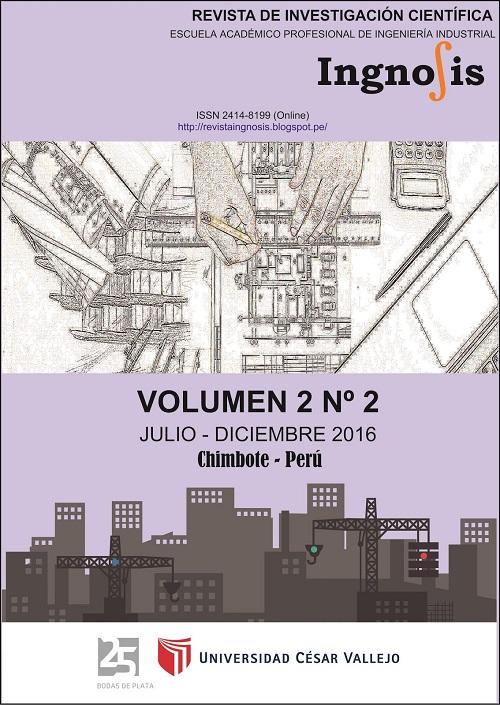Influence of the addition of mango peanut meal (Mangifera indicaL.), Kent variety and ascorbic acid on the technological characteristics of mold bread
DOI:
https://doi.org/10.18050/ingnosis.v2i2.2008Keywords:
Mold bread, Mango pear meal, Dietary fiber, Ascorbic acidAbstract
Objective.To study the influence of the addition of mango peanut meal (Mangifera indicaL.), Kent variety and ascorbic acid on the technological characteristics of the mold bread.
Materials and method.For the formulations, a complete factorial design was used 22, physical-chemical characteristics (specific volume, proteins, fats, ash, moisture, bark color and bread crumb) and sensorialproperties were evaluated (n=30 panelists).
Results.Ascorbic acid does not have a statistically significant influence, while adding mango peel HCM (5-15%) gives specific volumes lower than 4.6 ml / g. The HCM dietary fiber also had an influence on quality, evidencing the intention to purchase formulations 3 (6.5% HCM and 88 ppm ascorbic acid), 5 (5% HCM and60 ppm ascorbic acid) and 11 (10% HCM and 60 ppm Ascorbic Acid).
Conclusion.The addition of mango peel flour and ascorbic acid have influence on the technological characteristics and acceptability of the public to mold bread.
Downloads
Downloads
Published
How to Cite
Issue
Section
License

This work is licensed under a Creative Commons Attribution-NonCommercial 4.0 International License.











